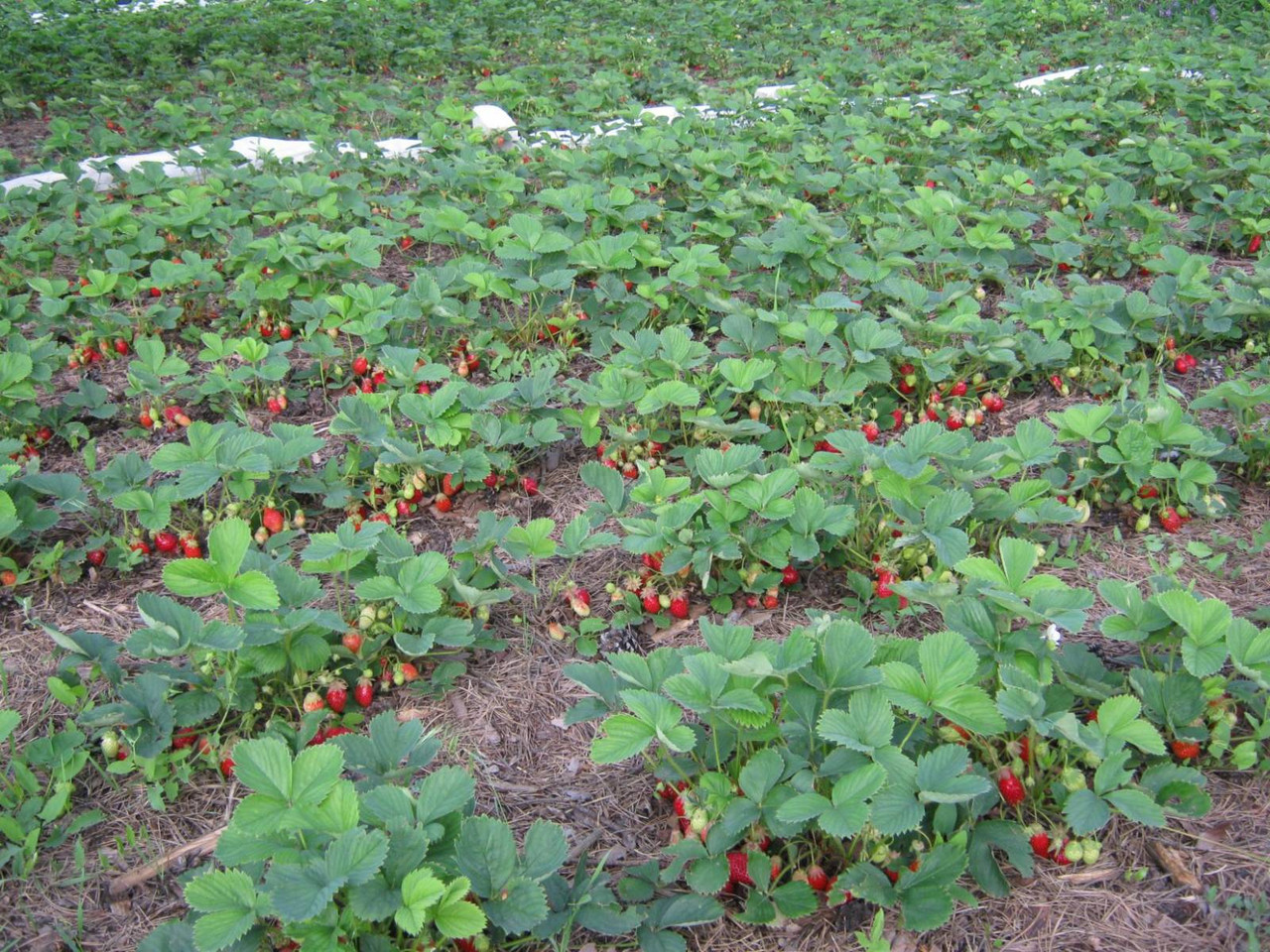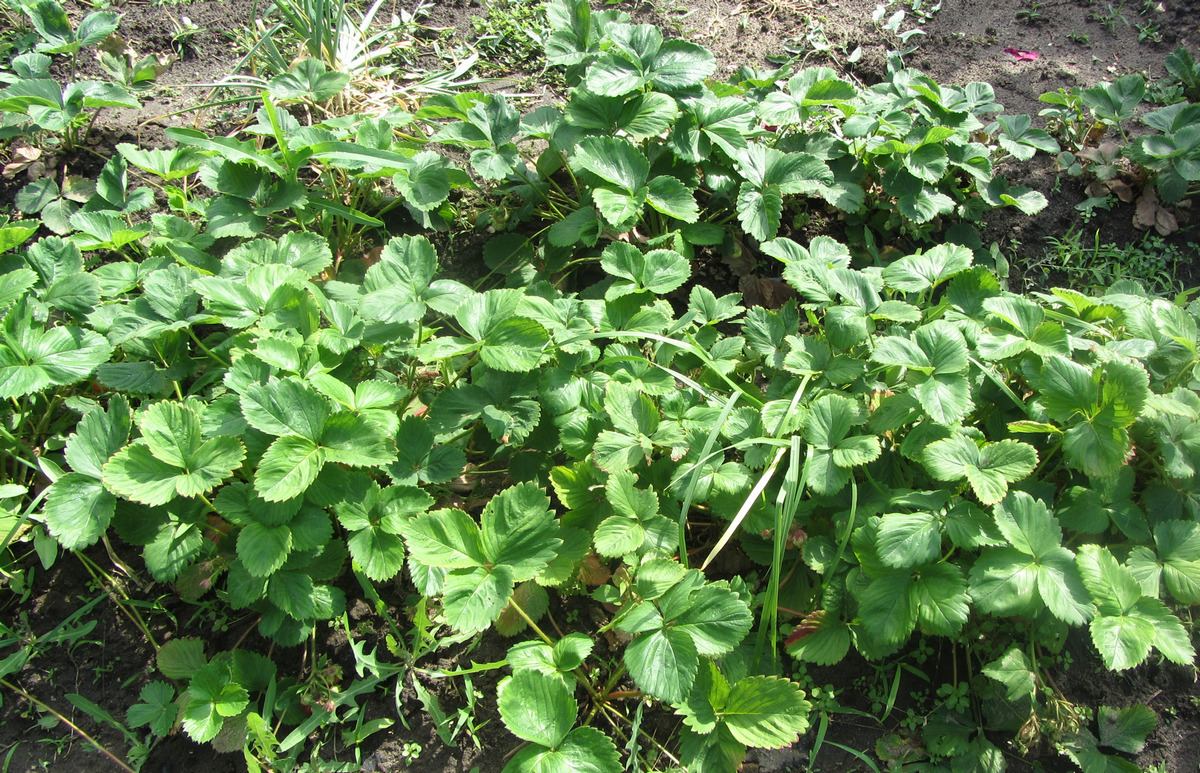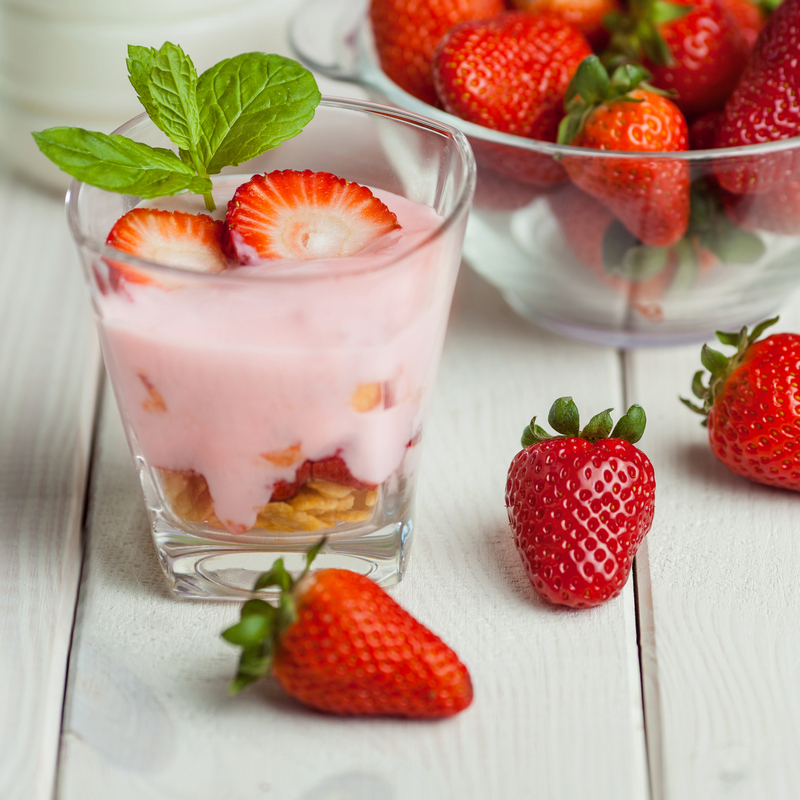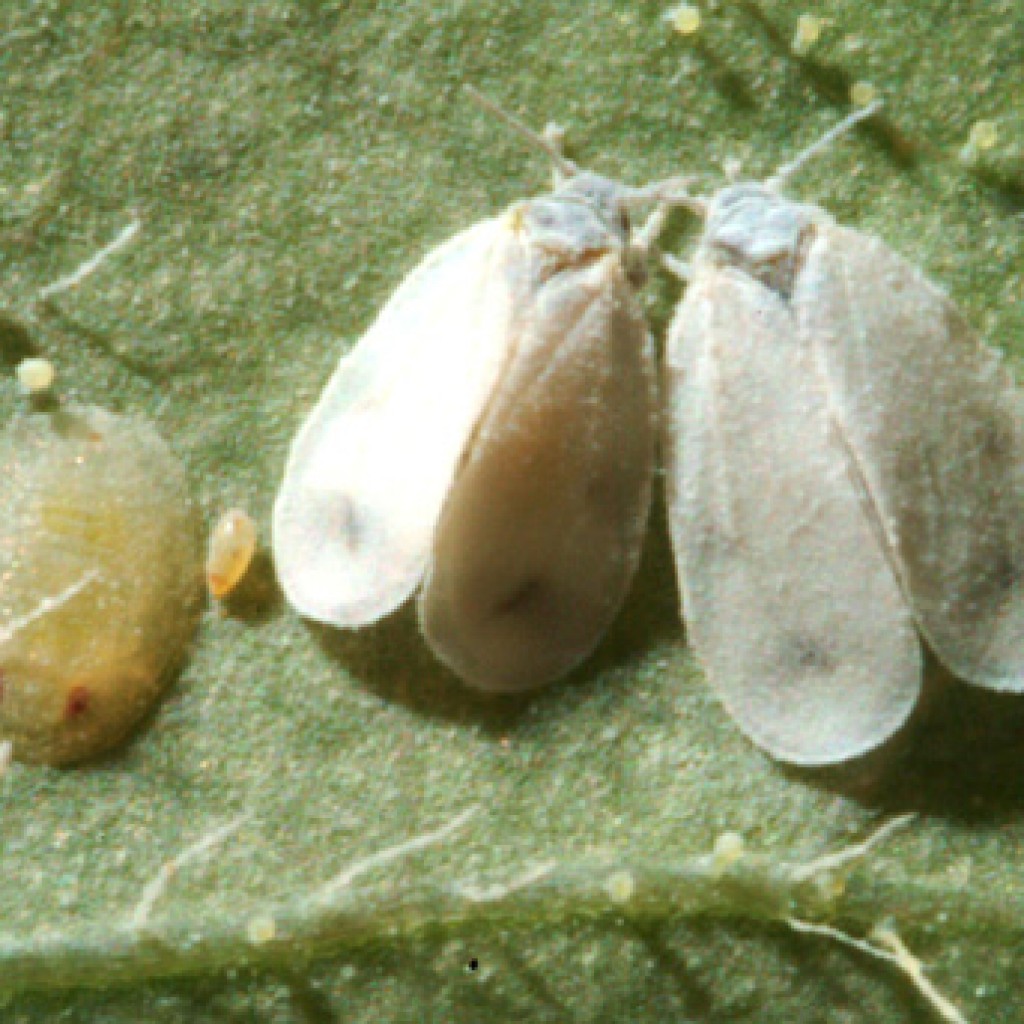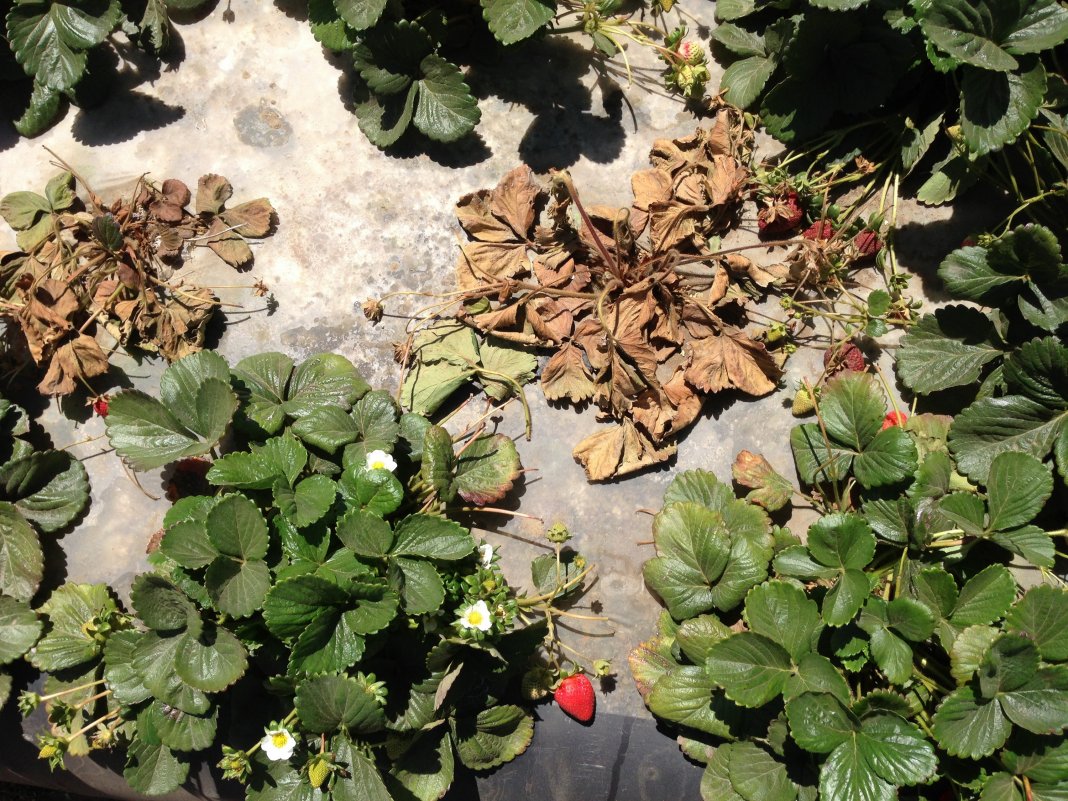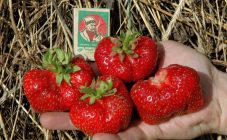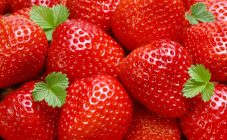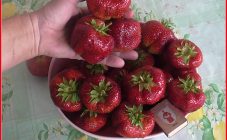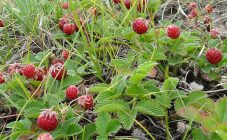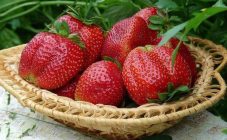Content:
Strawberries are the most common berry growing in every summer cottage. It belongs to the genus Strawberry of the Pink family. Homeland is South America, more precisely - Chile. It was bred in Holland in the 18th century by crossing Virginia and Chilean strawberries. It was brought to Europe only in 1712 by the French officer A. Frezier, thanks to which now everyone in the world knows what a strawberry is. It appeared in Russia quite recently, in the 19th century, where before that they collected wild strawberries.
Are strawberries a berry or a nut?
The culture is popular all over the world, as it is distinguished by bountiful harvests, frost resistance and unpretentious care. Now it is the only berry whose seeds are outside, not inside.
The fruit is a false berry formed by the growth of a receptacle.
The tasty pulp is only a binding grain of the fruit, but since the receptacle turned out to be tasty, these nuts are grown because of it. Therefore, strawberries are a nut, although the softest and tastiest, and outside there are not bones, but small many-nuts.
Curiously, a plant called strawberry is hardly ever grown today. In fact, the correct name for the most common berry is strawberry, which is grown in all dachas and gardens in our country. Strawberries and strawberries have a different cut, the first has a red color, and the second has a white core, there is a shaft and seeds along the entire outer surface.
The duration of fruiting depends on conditions, weather and variety. It is better to plant varieties with different ripening periods in the area in order to enjoy the false berry longer. It can be wiped with sugar, eaten raw, frozen, many people like to make jams and jams, use it as a filling in pies, decorate cakes and other desserts. There are a lot of recipes. You can simply grind the berry with sugar and spread it on a slice of bread.
Popular varieties
Strawberries are a perennial plant and there are many different species. Most often, garden strawberries are grown. Flowering occurs in late May - early June, ripens in mid-June - early July. It grows in oak, pine and mixed deciduous forests, on hillsides, in fields, forest edges, among shrubs.
In nature, there are several types of this unusual berry:
- Forest. Grows in deciduous forests, height up to 20 cm, small berries of bright red color.
- Plain, or meadow. Grows in open areas, small bushes from 5 to 20 cm.
- Sadovaya- the most common, which is grown everywhere. The berries are bright red, very large.
- Musky - a popular species that grows in the gardens of summer residents.
By the number of fruiting, they are distinguished:
- Disposable. Yields a crop once a season. The berries are large, juicy, bright red.
- Early varieties. They are distinguished by frost and drought resistance, sour-sweet, small in size (Alba, Oktava).
- Late varieties, which are characterized by thick skin, tart taste and almost no smell (Malvina, Bohemia, Adria).
- Repaired strawberries. Fruiting in early June-July and late August-September. The berries grown in autumn are particularly tender and sweet, but small in size. These include the varieties Temptation, Diamant, Moscow delicacy.
The size of the berries are:
- Classic red strawberry- the most widespread variety (Ruby Pendant, Krymchanka, Krasnoyarka). Not demanding to grow, tolerates cold weather well, suitable for cooking jam for the winter.
- White berry popular among people with allergies, has a slightly sour taste, the smell is not pronounced (White Swede, Pineberry, White soul).
- Decorative. A very unpretentious variety with small berries, abundant greenery and bright pink inflorescences (Pink Panda, Cascade, Garland).
There is also a strawberry weed. These plants do not produce fruits, while they are distinguished by a large number of flowers and whiskers that grow at a tremendous rate. At first glance, this variety is no different from ordinary strawberries, but it either does not yield a harvest, or it will be small and dry berries. They must be pulled out along with the rooted sockets. We are talking about such varieties as Bakhmutka, Zhmurka, Dubnyak. The people are listed as a weed strawberry.
Male and female bushes: how to distinguish
Most often, male bushes are referred to as weed strawberries. There are also women, and it is important to distinguish between them. When buying seedlings, you need to pay attention to the bushes themselves, if this plant is small in size with a large number of peduncles, small leaves and the absence of a mustache. Male species are characterized by abundant foliage, the absence of peduncles and many mustaches, are rich in powerful and beautiful rosettes from which berries cannot be expected.
The benefits of strawberries
In ancient times, there was a belief that strawberries should not be eaten, because they are close to the ground and frogs can jump on it, snakes crawl. Now everyone knows how many magical properties this plant has, but you don't have to write about the medicinal benefits. Not only the berries themselves are useful, but also the rhizomes with leaves. They have tannins, so their decoction is used for diseases of the mucous membranes, sore throat, nose, and disorders of the digestive system. Tea from the leaves helps to fall asleep, for those who suffer from insomnia, lowers blood pressure, is a diuretic and expectorant.
Strawberries contain useful fiber, minerals (calcium, phosphorus, magnesium, potassium, manganese, zinc, iodine, sodium, selenium, iron), a large amount of sugars, vitamins (retinol, riboflavin, ascorbic and folic acids, tocopherol, niacin, biotin ). With proper nutrition and lifestyle, this plant has a healing effect on the entire body. The beneficial properties of strawberries can cure many diseases, such as hypertension, eczema, sclerosis, constipation and diseases associated with the digestive system.
With constant use, metabolism is normalized, anemia, kidney and heart disease are cured. Strawberries have antimicrobial properties, they contain a large amount of natural aspirin, therefore they help with headaches and other pains. Fresh strawberries contain a low glycemic index, so because of the small amount of sugar they can be eaten by people with diabetes. Thanks to its soft fibers, the berry is useful for intestinal motility.A special substance found in strawberries is a powerful aphrodisiac for men and women.
It is an easily digestible product that takes 20 minutes to digest, while giving energy, lightness and a sense of fullness. Energy value per 100 g is only 41 kcal. The low calorie content is due to the fact that most of the multi-nut is water. The nutritional value of strawberries attracts those who are losing weight. At one time in Hollywood, the diet on this berry was very common.
In addition, strawberries are good for the skin as they slow down aging and improve complexion when used as masks. It can be used as a whitening agent, is effective for acne, age spots, freckles, and aging skin. The juice can be used to whiten teeth and freshen breath. All of the above puts an end to doubts whether it is worth planting this crop in a summer cottage.
At what age can you eat strawberries
You can eat strawberries at any age. As a complementary food, in the absence of allergies, it is administered from 12 months and earlier, so as not to harm the health of the baby. However, the berry has contraindications. It is not recommended to eat it for people with:
- allergic reactions to it. As a rule, these are red skin rashes that itch very much;
- diseases of the gastrointestinal tract;
- gastritis and ulcers;
- dentures, so small bones (they are nuts) can be inconvenient.
It is best to eat strawberries in season, as berries are grown in winter with a lot of harmful nitrates, hormones and are dangerous to health.
Pests
Strawberries are a delicate plant that needs constant care. There are many pests that love to feast on the delicious plant. Here are the main ones:
- Strawberry whitefly - This is a butterfly with snow-white wings, which is very difficult to find due to the small size and translucent color of the larvae. In addition, it hides on the inside of the leaves. One individual is able to spoil the harvest for 1 sq. m.
- Strawberry mite, which in the spring can completely destroy the plant. Like the first pest, it is almost impossible to detect it, since its larvae are translucent in color and microscopic in size. Most often, the pest is detected after the insect has begun to eat the leaves. The plant stops growing, dries up and becomes yellowish.
- Strawberry leaf beetle also lives on the inside of the leaves, but unlike previous insects, it is easy to detect by its brownish or yellowish tint. The parasite gnaws the middle of the leaf to the stem with stalks.
- Strawberry nematode... It is very difficult to detect, because the insect settles in the axils and buds of the leaves, in the soil. These are worms of microscopic size up to 1 mm. After being hit by a nematode, the bushes stop bearing fruit, wither or rot. The petioles acquire a reddish tint, the strawberry leaves become thinner and darker.
- Raspberry and strawberry weevil is a beetle up to 3 mm gray or black, which damages the stalks. Lays the larvae, which destroy future buds.
- Slugs also love to feast on the tender fruit growing in the shade. They damage the fruits and leaves themselves. They are huge up to 50 mm in length, yellow or black. They like wet, rainy weather, avoid sunny places.
In order to prevent unexpected pests from appearing on the site, as a preventive measure, you need to constantly loosen the soil, pull out weeds next to the bushes, prevent the bushes from thickening, do not plant in the shade or in wet areas, plant on the same bed after 3-4 years ...
If the strawberry whitefly is affected, the leaves should be wiped with an infusion of garlic or yarrow, soapy water, and also use a bright glue strip so that the insect flies to a bright color. An infusion of onion peel or garlic helps against ticks. Control measures for strawberry leaf beetle will be tobacco dust, pesticides karbofos or karate. The strawberry nematode is afraid of heat treatment of the roots. If it is damaged, you can spray the soil with carbon disulfide. Against weevils, you can sprinkle the bushes with an infusion of wood ash, a decoction of wormwood or chemicals, for example, Iskra-M. But slugs do not tolerate watering with citric acid and the aroma of essential oils.
Strawberries are a very healthy, tasty and rather unpretentious berry that should be planted on the site. If you choose the right variety and provide proper care, it will delight you with its tasty and aromatic harvest for many years.

